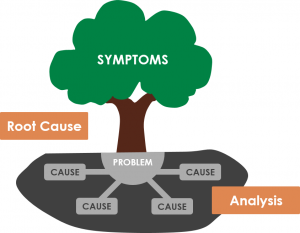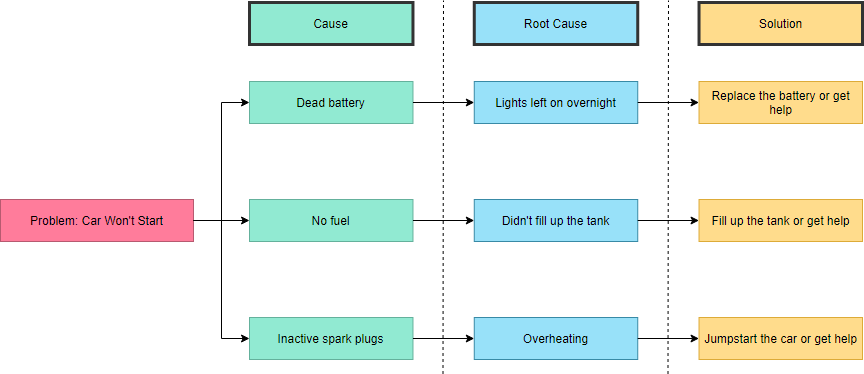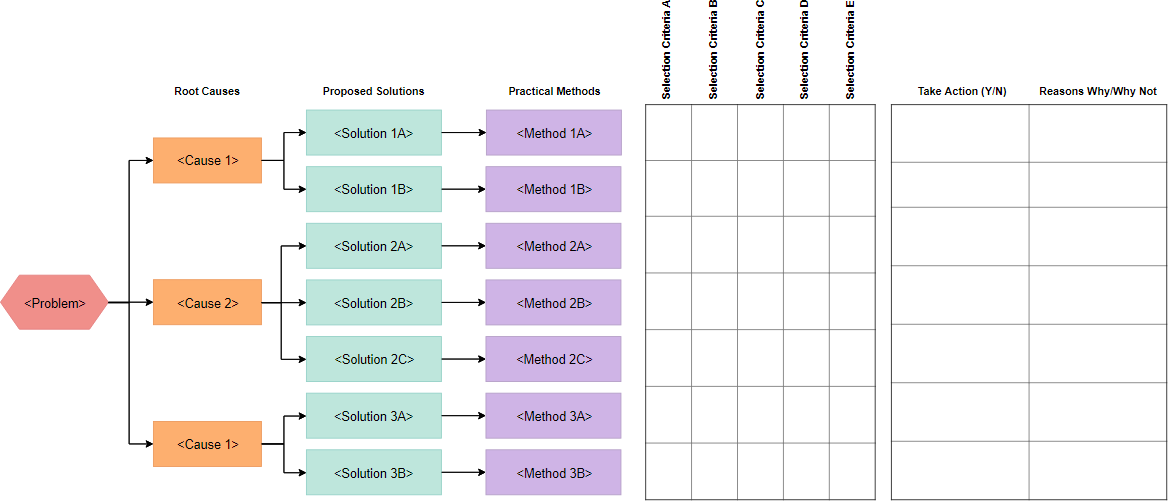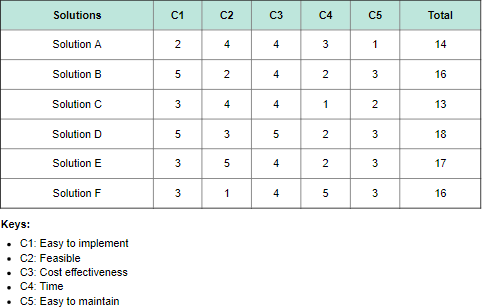When there are issues such as unsatisfied customers, decreasing market share, poor quality, etc. you have to understand the root cause of the issue. Root cause analysis is an important step to enable companies to make the right changes to prevent faults from happening over and over again. There are three ways of dealing with recurrent problems. We can:
- Ignore them.
- Perform a temporary fix.
- Get to the bottom of why they’re happening in the first place.

Dig out the Root Cause
- If we take the first option, the problem will never be solved and could escalate.
- If we take option two, it is the equivalent of painting over a stain or sticking a piece of tape over a leak and hoping it will hold – you’re treating the symptoms, but not the cause.
- Taking the third option, i.e. analyzing the root cause, is the most time consuming, but should allow you to take steps to ensure that the problem never occurs in the future.
For example: If your problem is that your car won’t start, the cause could be that it has no fuel. The root cause of this could then be that you forgot to fill up the tank, and the corrective action is, of course, to find some fuel. Root Cause Analysis (RCA) can be decomposed into 4 steps:
- Identify and describe clearly the problem – Write down the specific problem. Writing the issue helps you formalize the problem and describe it completely. It also helps a team focus on the same problem.
- Identify any issues that contributed to the problem – Ask Why the problem happens and write the answer down below the problem
- Determine root causes – If the answer you just provided doesn’t identify the root cause of the problem that you wrote down in Step 1, ask Why again and write that answer down. Repeat and until the team is in agreement that the problem’s root cause is identified. Again, this may take fewer or more times than five Whys.
- Identify recommendations for the recurrence of problems in the future and implement the necessary solutions
RCA generally serves as input to a remediation process whereby corrective actions are taken to prevent the problem from reoccurring. The name of this process varies from one application domain to another.

Edit this Root Cause Analysis Tree
Prioritize Solutions for RCA with Solution Selection Matrix
Once you had conducted the Root Cause Analysis, now it is time to formulate the action plan for improvement. We can use the Solution Selection Matrix as a tool for developing our action plan by using the findings obtained in the RCA. It should be done in a team that should involve the right stakeholders, managers, and decision-makers to more buy-in for the implementation plan.
A solution selection matrix will contain the following:
- The problem we’re trying to solve.
- The root causes attached to the problem, in a horizontal tree hierarchy diagram.
- The practical solutions attached to each root cause at the bottom of the tree structure diagram
- Then, identify several attributes to determine the effectiveness or feasibility of the proposed solutions. A Solution Selection Matrix template is shown below:

Edit this Solution Selection Matrix Template
Use Solution Selection Matrix Standalone
A selection matrix (also known as a prioritization matrix) is a ranking technique used to evaluate potential projects, problems, alternatives or remedies based on specific criteria or quality dimensions. It is an analytical approach to pick the winning solution for deployment. Depending on what the company would like to achieve, i.e. does the group want a project with the greatest return on investment (ROI) or one that can be implemented quickly? The evaluation criteria could be based on time impact, cost impact, and other factors.

Edit this Solution Selection Matrix Example
The results of the analysis are shown in the overall score column. Higher the score better is the solution in meeting the four requirements.